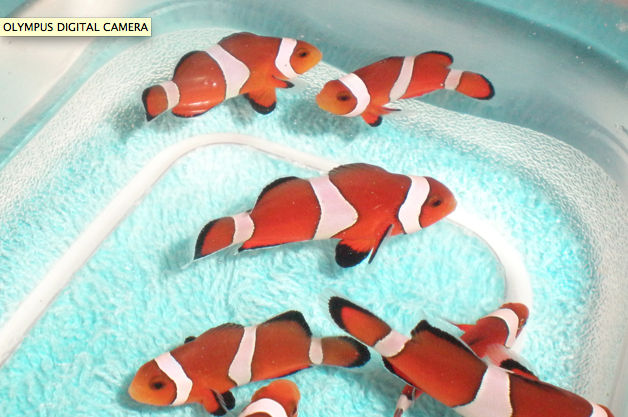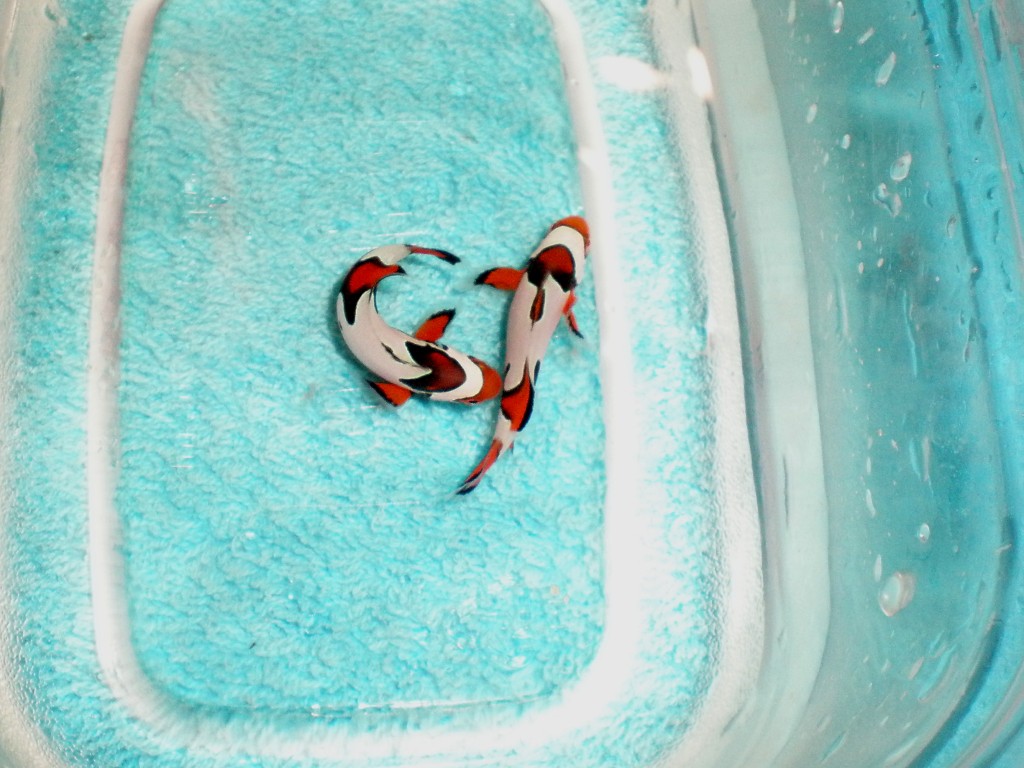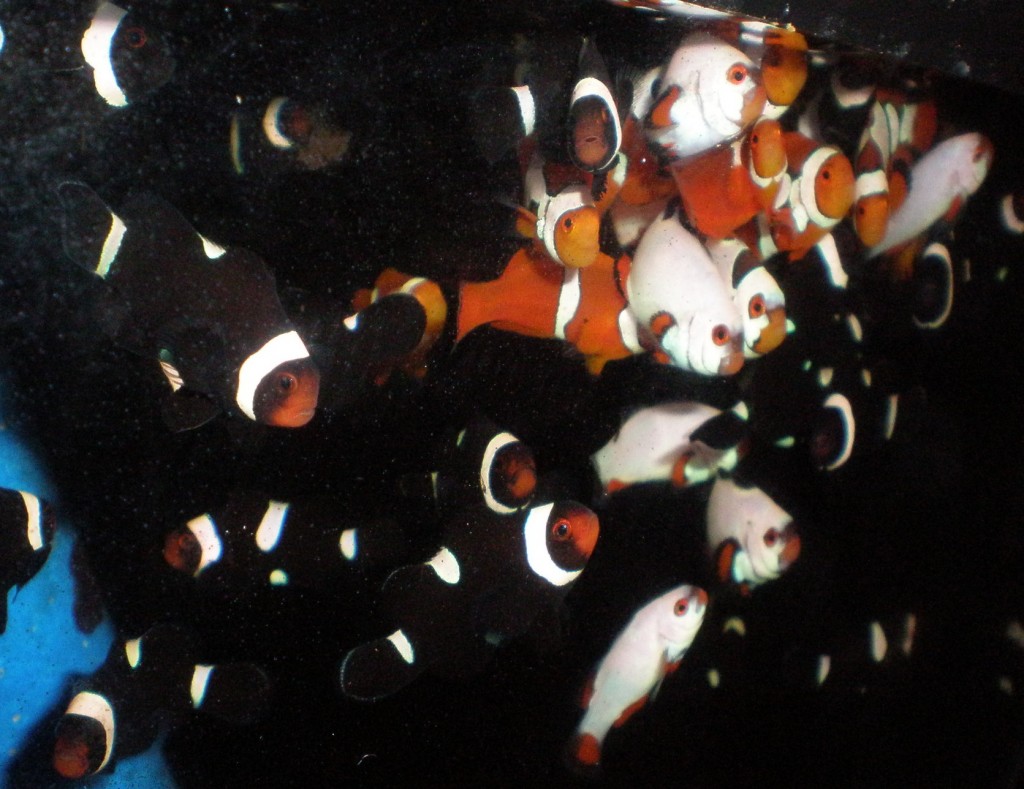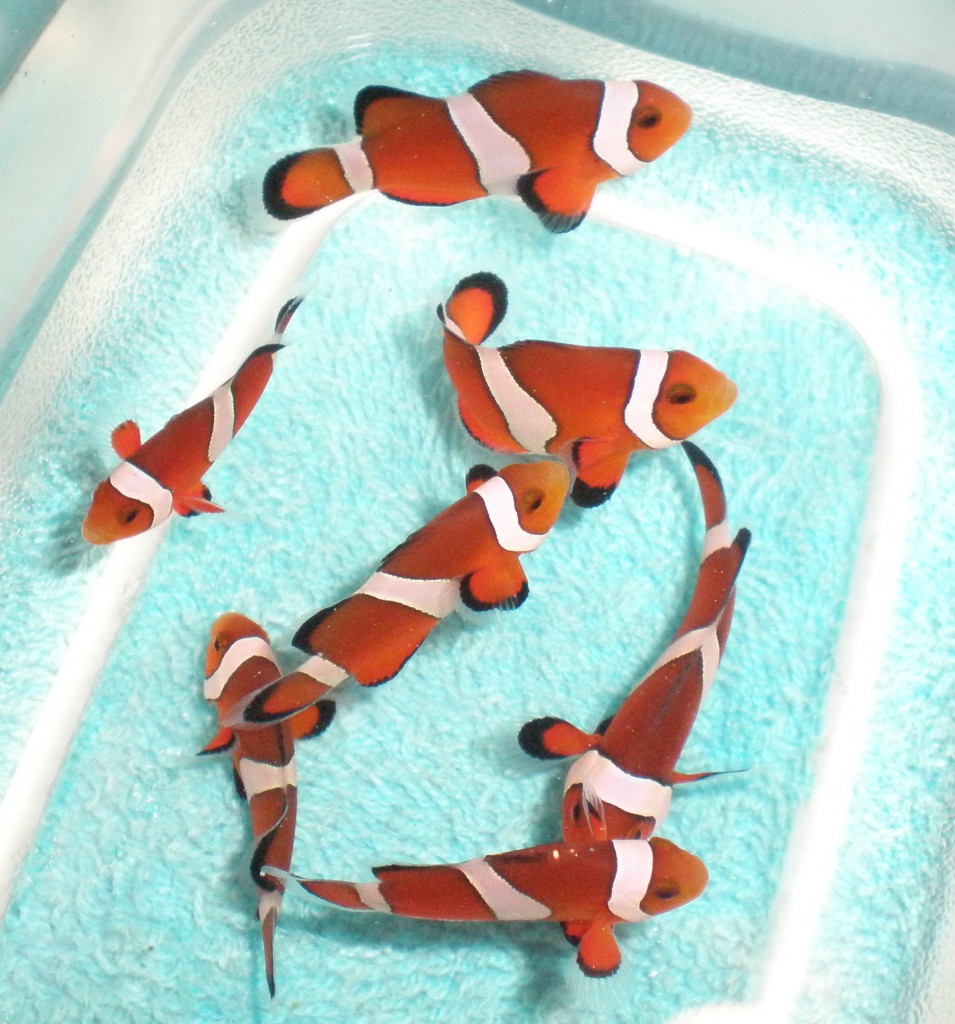On Friday I reported on the new line of products from Reed Mariculture called “APBreed“. It took me a minute to figure out what the name stood for. At first, I thought it was an App for breeding. After a closer look at the logo, and a chat with Gresham, I realized that the APB part stands for “Aquarists, Propagators, and Breeders” and the “Reed” part… well, that’s obvious now.
I was lucky enough to be involved in the testing process of the new Top-Dressed Otohime (TDO) and I have to say that I’m very impressed. I’ve been breeding clownfish for a few years now and the coloration and growth I’m seeing with TDO are spectacular! In the past I used a mix of various flake foods, crushed with a mortar and pestle, and frozen cyclopeeze for juveniles that were weaned off rotifers and Otohime A. The results were fine, but nothing out of the ordinary.
I started using the full TDO product line last April on a batch of Picasso and Darwin A. ocellaris juveniles that are housed in the same tank. Otohime is a high quality marine fish food from Japan that is available in various sizes starting at ~250 microns. The process of “top-dressing” makes it an even better product.
The orange coloration I’m getting is extremely bright, brighter than anything I’ve seen in the past. I expected this with the added astaxanthin, what I didn’t expect was the more rapid development of the black pigmentation in the Darwins. The Darwins darkened up much faster than in the past and are almost fully black and white two months earlier with very little orange left at the age of four months. You can see the results below:
The fish above still had a bit of frozen cyclopeeze in their diet since I purchased a large block of it before I got the TDO. Now that I’m happy with the results I’m getting with the TDO I’ll be able to eliminate the frozen cyclopeeze and save a bit of money while getting excellent coloration and growth.
The batch of regular A. ocellaris below are three months old and have been raised solely on a diet of TDO. The results are pretty clear:
All in all, I have to say that I’m very happy with this product. The intense coloration and increased growth rates that I’ve experienced have made a big difference in my juvenile feeding protocols. I also have to mention that the high level of customer service and communication that Reed Mariculture offers is just over the top! I applaud what the company is doing to facilitate captive breeding of marine ornamentals.













Wow, those are really bright. They almost don’t look tank raised. It also looks like in the pic of the Darwins some of them are entirely black including their faces (am I crazy)?
I know, right?! The TDO brings out amazing coloration at a very young age. You’re correct, the Darwins are almost fully black 2-3 months sooner than any batch I’ve raised previously. The only change I’ve made has been the new food.
Do you think there would be any merit in adding the new food into a feeding regimen maybe once a week or mixed with other foods?
Honestly, I don’t know for sure. I’m only using TDO to feed my juveniles at this point. The food is fairly small although Otohime does come in larger sizes.
One thing I can say for certain is that clownfish I have raised on this food and later switched over to simple flake foods have not lost their coloration.
I’ve been using the C1 and B2 sizes of TDO with my Four Eyed Butterflies (Chaetodon capistratus) – the small pellet size has really worked well – a more traditional “small pellet” size is simply too large for these fish to consume, but they take down the TDO no problem. I’m really excited for the diversity of sizes this is being offered in. I’ve also mixed it into the slurry I use to feed my corals…couldn’t tell you if it’s a “good” or “bad” coral food, but the corals certainly take it up.
Glad to see you reporting on the results of this great food and I’m excited for it to be officially on the market! The picassos I raised on samples have so much color, they don’t even look like they are related to my earlier clutch.
It’s going to be hard to tell the difference between T/R and wild individuals.
Tal, when you say “The batch of regular A. ocellaris below are three months old and have been raised solely on a diet of TDO.”, do you mean no rots at all?
No. I still start them on rotifers and wean them onto Otohime A after 4 about days. What I was trying to point out was the enhanced coloration and growth I’m getting by using the Top Dressed Otohime(TDO) as opposed to the non-top dressed version, or any other weaning diets. Does that make sense?
Yes, thanks for the clarification.